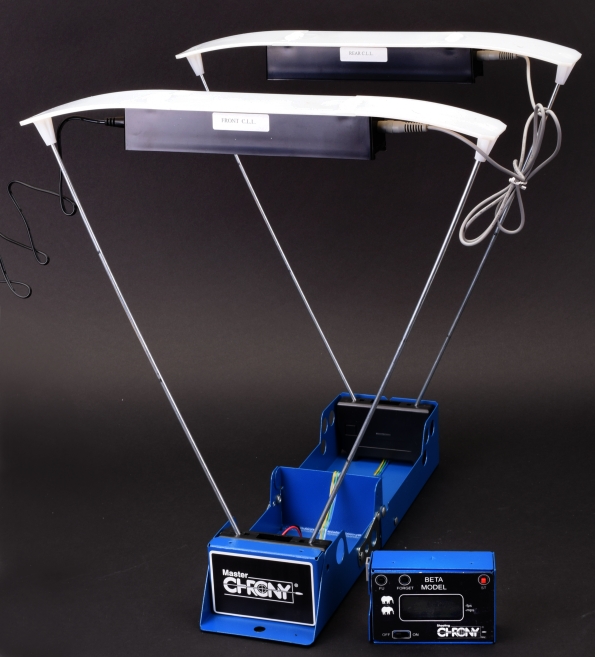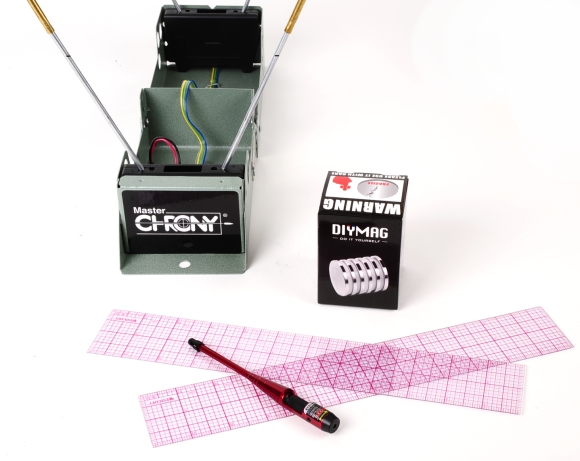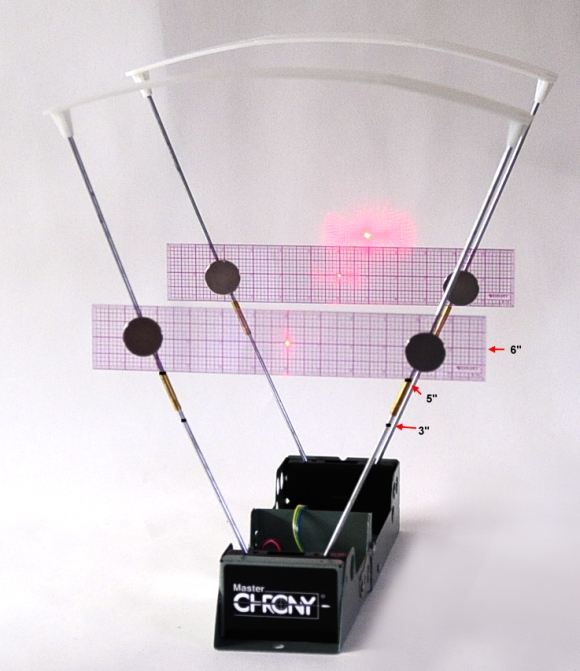
I go through a good number of chronographs. Sometimes they just give out from weather, some from use, sometimes I shoot them dead, sometimes they fall victim to cold weather, frozen ground and being awkwardly handled with mittened cold hands. I use Shooting Chrony, Oehler and some budget brand in blister pack I purchased when everything else was out for repair.
In use, they are all similarly accurate. The use of commercial grade electronic components sets a working temperature range between 32°F and 110°F where results will be credible. Component tolerance within that temperature range will provide up to +/- 0.50% inaccuracy. The Oehler will provide +/- 0.25% inaccuracy. What does that look like in use? At 3000 fps the display to actual velocity inaccuracy is +/- 15 fps for the Chrony and half that amount for the Oehler, however, shot to shot reporting within any given unit is typically consistent within a very narrow band.
If there is a significant error or inconsistency, it is typically introduced by the operator during set up. Either the battery performance is erratic outside of specified operating temperature range or a non-alkaline battery was selected for power. However, the greatest recording error is typically caused by the two photocells used to record bullet movement are not squared with the with the bullet’s travel.
It’s a little like drag racing… on a tiny, tiny track

A bullet is seen above the first photocell in a chronograph, which starts a timer. When the bullet is seen by the second photocell, it stops the timer. The elapsed time across a fixed span of 12″ for the Chrony is calculated into feet per second, or meters per second if you’re a communist. However, tilting the chronograph relative to the bullet’s travel creates a flight path that is diagonal to the photocells, which extends the distance and time the bullet remains above the photocells.
Moving the path of the bullet out of parallel with the chronograph’s sensors increases the distance the bullet travels to cover the space between sensors. In this case a 0.8″ change in that introduces a 6.6% error, or roughly 198 fps understated velocity for a 3,000 fps projectile, rifle, or 79 fps understated for a 1,200 fps projectile, handgun. A 10 degree shift introduces a 1.2% error so the change varies with angle of inclination. The other alignment issue is front to back. It is easy to line up the front, but not much of a shift left or right of the rear sensor can cause a bullet to trip the first sensor, but miss the rear sensor’s field of view and not trigger a stop message to the chronograph.
The Oehler uses and extended 48″ spacing between photocells. Where a 3000 fps bullet is timed for 1/3000th of a second over the Chrony, it remains over the Oehler screens for 1/750th of a second. The benefit of the Oehler unit is several fold. The Oehler utilizes a Proof Channel and two chronograph readings are recorded with each shot. The first is the elapse time from the first sensor to the mid sensor, the second is from the first or start sensor to the third or stop sensor. Both should be comparable in readings if there were no errors. The Oehler also utilizes better quality optical – electrical components and more robust circuit design which manifests these improvement in Oehler’s +/- 0.25% accuracy. Neither the long sensor spacing or use of multiple readings will reduce the degree of errors caused by the bullet path not being parallel to the units sensors.
Aligning chronograph with firearm…
I like to make things…. to the extent that practicality takes a back seat to creative license and sometimes even function. I once spent three days cutting tailored chronograph targets out of 1/4″ acrylic plastic sheet with with grid printed clear plastic overlays. The targets plopped into the front and rear sensor slots, a laser bore sight was put in the rifle bore and the rest was aligned so that the bore sight projection passed through the chronograph targets. Very nice, but they only lasted until I needed acrylic sheet for another project.
I used clear plastic notebook page protectors with centering marks and target heights applied with a felt tip pen; same arrangement with the bore sight and firearm. The problem was I taped them to the sky screen struts and they moved the chronograph when I pulled the target, they did not universally fit all chronographs…. and they looked really cheesy. Which takes me to my latest and seemingly long lasting solution.

The rulers came from Amazon, 2 of Westcott 8ths 12-Inch Beveled Transparent Ruler (B-70) $2.65 each. The wafer magnets, also from Amazon, are rare earth 32mm x 3mm or 1.26″x1/8″ in non-communist countries. These were $9 for six and a bit of an overkill. 18mm is probably a better choice as they have more than enough holding strength, but can more easily be removed without disturbing the aligned chronograph.

In the case of the Chrony, the manufacturer’s recommendation is to shoot 4″ above the chronograph body when using open sights and 6″ above the base when shooting with a scope to accommodate the higher line of sight above bore centerline. Above, the sky screen rods are marked so that placing the bottom edge of the ruler on a mark set placed the center of the ruler 1″ higher and to the manufacturer’s recommended distances above the sensor. Pictured with the laser projecting through the rulers. The rulers go up sandwiched between the sky screen rods and wafer magnets, which makes them easy to remove without disturbing alignments.
Does this work? Sure. When checking velocity, I shoot rifles from a sled so once aligned, the alignment stays put. Handguns are shot from a Ransom rest or from a well supported adjustable rest, so the outcome is about the same. It is nice not to have different velocity readings from one setup to the next caused by different firearm to chronograph alignments. I this the best approach? For me, for now, but the best alignment targets would remain in place while shooting so the point of aim is always visible through open sights or scope and the laser bore sight would be eliminated. The issue is that an opaque target can’t be used because it would obstruct view beyond the chronograph… never a good idea. Maybe I’ll go back to using flexible clear plastic targets held to the sky screen rods with wafer magnets and left in place while shooting. That would certainly make shooting with a rifle or handgun less cumbersome. Let me think about that for a while….

Email Notification